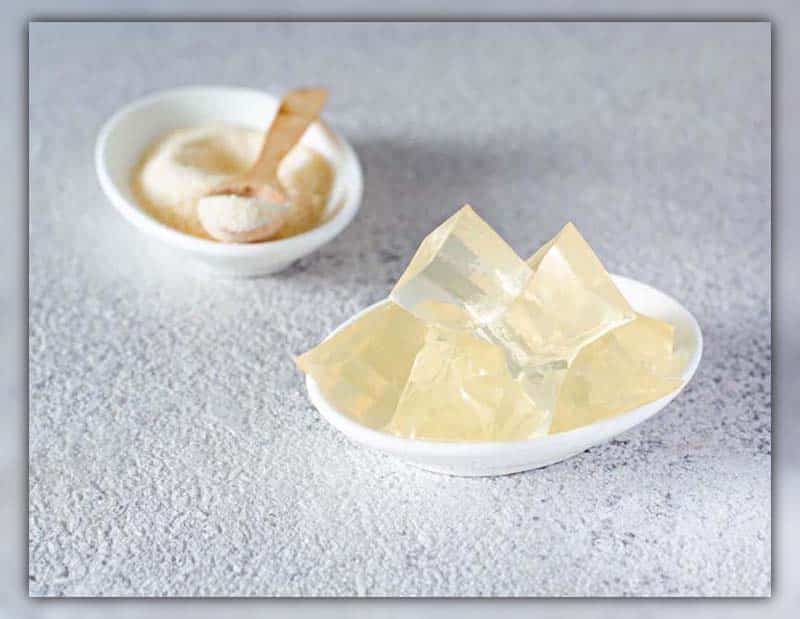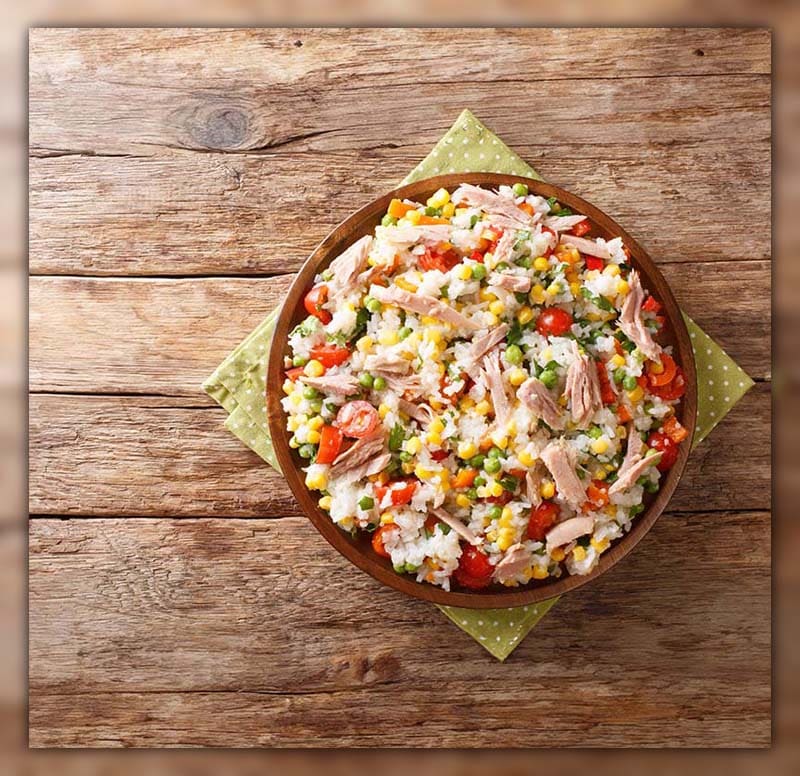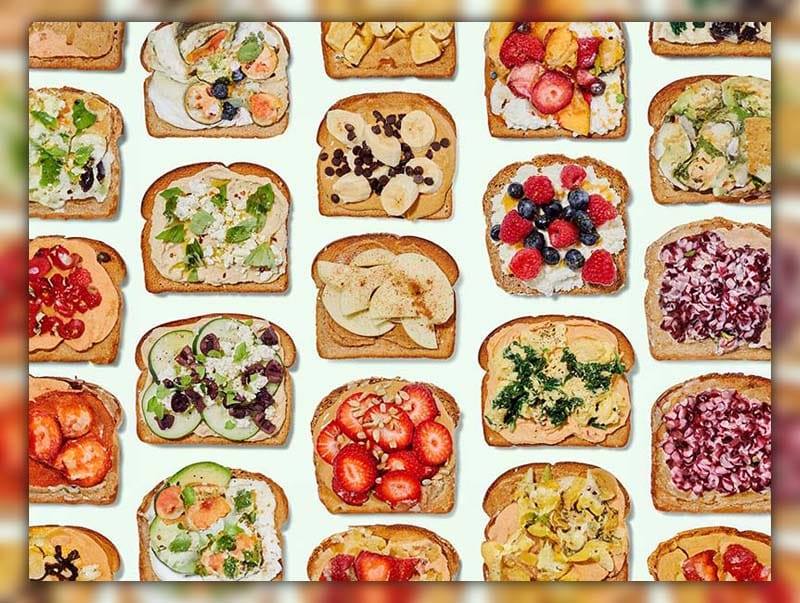Have you been tirelessly searching for a straightforward diet to jumpstart your weight loss journey? Are conventional diets leaving you overwhelmed or unsatisfied? Enter the tuna diet: a simple yet nutritious approach to healthy eating. Wondering, is tuna and rice good for weight loss?
This Tuna Diet Tango: Dancing to a Slimmer You! dives deep into this diet’s potential benefits, delicious recipes, and insightful tweaks. Whether you’re an avid dieter or just curious, discover how the tuna and rice for weight loss might be the game-changer you’ve been seeking.
Is Tuna and Rice Healthy?

Tuna, being a robust source of protein, can enhance your energy levels and maintain that feeling of fullness throughout the day. On average, every 100 grams of tuna provides an impressive 24 grams of protein. It’s a rich source of vitamin B3, providing approximately 19 mg for every 100 grams.
Rice, especially whole grain varieties, offers dietary fiber which aids in smoother digestion. A fiber-rich diet can not only improve your gut health but also work as a preventive measure against constipation
So, a combination of tuna and rice can be a dynamic duo when it comes to fueling your body.
Is tuna and rice good for you?

Weight Loss: This tuna diet is inherently low in calories, making it a reliable choice for those looking to shed unwanted pounds without compromising their health.
Improved Heart Health: Tuna, a key component of this diet, is a rich source of omega-3 fatty acids – as guardians for your cardiovascular system, reducing inflammation and improving blood vessel function.
Increased Energy: Protein is the body’s preferred source of energy, and when consumed in adequate amounts, it provides a sustained release of energy throughout the day. By keeping you feeling full and satisfied, this tuna diet ensures you remain energized and alert, allowing you to tackle daily tasks with ease.
Better Digestion: Rice, the other cornerstone of this tuna diet, contributes to improved digestion and prevents issues like constipation. Incorporating rice into your diet can help harmonize your digestion, leading to better overall gastrointestinal comfort.
Downsides of the tuna diet

Inadequate Caloric Intake: Tuna diet might seem like an appealing way to shed some pounds, but it’s noteworthy that it provides a meager 610 calories per day. This is a stark contrast to the typical 2,000-calorie daily intake that many adults require. Such a dramatic caloric deficit can lead to fatigue, nutrient deficiencies, and other health concerns.
Mercury Concerns: Even when consuming lighter varieties of tuna, a person weighing around 150 pounds (68 kg) would ingest a whopping 68 mcg of mercury daily.
Short-lived and Highly Restrictive: It’s initial phase is intended for a mere three days, which doesn’t offer enough time to instill or support long-term healthy habits. Such restrictive and short-term diets rarely lead to sustainable weight loss.
The Challenge of Fad Diets: There’s substantial research suggesting that fad diets, like the tuna diet, are challenging to adhere to over extended periods. Moreover, the long-term efficacy and health implications of these diets remain ambiguous.
Limitations on Food Intake: The tuna diet also comes with an extensive list of foods to avoid, which can make daily meals feel monotonous and unvaried:
- Grains and Starches: This includes rice, wheat, bulgar wheat, quinoa, millet, potatoes, and corn.
- Meats: Beef, lamb, and pork are off the table.
- Legumes: The diet restricts the consumption of chickpeas, pinto beans, black beans, kidney beans, and similar foods.
- Nuts and Seeds: Almonds, peanuts, cashews, walnuts, and sunflower seeds are among the excluded items.
- Full-fat Dairy Products: Items like whole milk, butter, cheese, and ice cream should be avoided.
- Sugary Beverages: Sodas, energy drinks, and sports drinks are to be sidelined.

Sample Daily Tuna diet Meal
Breakfast:
- Drink: Choose from tea, coffee, or a traditional cooked mate.

- Fruit: Enjoy 2 pieces of your favorite fruit for a fresh start to the day.
Mid-Morning Boost:
- Opt for a low-fat yogurt. You can enhance it with a sprinkle of cereal or some fresh fruit chunks.

Lunch:
- Main Course: Dive into a plate of tuna and rice. There’s no limit – eat to your satisfaction.
- Dessert: A serving of light gelatin for a touch of sweetness.

Mid-Afternoon Refreshment:
- Quench your thirst with a glass of citrus fruit juice. Whether it’s orange, grapefruit, or lemonade, pick what tickles your taste buds.

Snack:
- Drink: A warm infusion, be it tea, coffee, or cooked mate, is perfect to wind down.
- Bite: Pair it with a slice of whole wheat toast topped with a slice of light cheese.

Dinner:
- Main Course: Yet again, relish the simplicity of tuna and rice, eating as much as you feel like.
- Dessert: End your day with another portion of light gelatin.
Tuna and Rice Weight Loss Recipes
Ingredients:
Serves: 4
- 3 cups of microwave brown rice
- 1/2 cup of frozen peas
- 1/2 cup of tinned corn
- 1 ripe tomato
- 2 cans (185g each) of tuna in springwater
- Juice of 1 lemon
- 1 tbsp of extra virgin olive oil

Simple Steps to make your tuna diet meal:
- Follow the instructions on the microwave brown rice packet to cook it to perfection.
- Place the frozen peas in a microwave-safe bowl with a touch of water and cook for 2-3 minutes or until they’re tender.
- Ensure you drain the corn and tuna thoroughly to prevent excess moisture.
- Dice the tomato into bite-sized pieces for a burst of freshness.
- Whisk together the lemon juice and olive oil until well combined.
- In a large bowl, toss the rice, peas, corn, tuna, and diced tomato. Drizzle your lemon-olive oil dressing over the top and stir gently to ensure everything’s coated.
Tweaks & Tips: Feel free to swap out or add any frozen vegetables you have on hand on your tuna and rice diet dish.
Nutritional Breakdown (per serve) of your tuna diet recipes:
- Energy: 1800kJ
- Protein: 30.0g
- Total Fat: 10.1g (Saturated fat: 2.5g)
- Carbohydrates: 50.8g (Starch: 46.5g, Sugars: 4.3g)
- Added sugars: 0g
- Free sugars: 0g
- Dietary Fiber: 6.2g
- Sodium: 235mg
- Calcium: 32mg
- Iron: 2.5mg
FAQs
Can I eat tuna and rice everyday?
Avoid having the same meal every night, even though these nutritious foods are beneficial, overdoing it can have its downsides.

Does tuna and rice go together?
Yes, tuna and rice can be paired together in various dishes, and they can complement each other quite well. The combination of tuna and rice can offer a satisfying meal with a blend of protein from the tuna and carbohydrates from the rice. It’s versatile, and the specific preparation can vary depending on your culinary preferences.
How much weight can you lose on the 3 day tuna diet?
The 3-Day Diet asserts that individuals can shed up to 10 pounds within a three-day span. While weight loss can occur on this diet, it primarily results from its extremely low-calorie nature.
What goes with tuna and rice?
These foods can combine with your tuna diet:
Vegetables like broccoli, carrots, asparagus, or green beans, bok choy.
Sauces and Condiments like Soy sauce or tamari,Sriracha, Teriyaki sauce and Mayonnaise-based sauces.
Herbs and Spices like cilantro, parsley, or chives. Ginger, garlic or sesame seeds.
Fruits like Pineapple, mango, oranges or grapefruit.
Nuts and Seeds like peanuts or almond.
Pickled Ingredients like Pickled ginger, kimchi, or pickled cucumbers.

How many times a week is too much tuna?
Consume 2-3 serves of any type of tuna per week. The quantity of small tins (95g each) of tuna you can safely consume each week without surpassing maximum mercury limits varies based on your body weight and the specific brand of tuna you choose. It typically falls within the range of 25 to 35 tins per week.
Does tuna burn belly fat?
Consuming tuna post-workout can aid in sustaining your energy levels while promoting the reduction of abdominal fat, thanks to its high thermic effect. Tuna is considered a complete protein source.
Is tuna good for Keto Diet?
Tuna is naturally low in carbohydrates, making it an excellent choice for the keto diet. However, it is also deficient in fiber, which means it may not provide a strong sense of fullness on its own. To address this, consider combining it with nutritious vegetables.
Conclusion
In conclusion, the tuna diet stands as a potentially enriching choice for individuals seeking a simple, nourishing, and satisfying path to weight loss. From understanding the pros and cons to exploring sumptuous recipes, we have covered every corner of this diet, arming you with the information to make an educated decision for your health journey.
Remember, it is always recommended to consult a healthcare provider before making any significant changes to your diet. Stay tuned to Bodyfitnt for more insightful blogs where your well-being is our priority. Feel free to dive deeper into the world of health and fitness with our ever-growing library of content. Let’s journey to better health together with BodyfitNT!

Born on July 26, 1960, Professor Tim Olds is a leading authority in the field of health sciences, focusing on exercise science, nutrition, and well-being. As the Bradley Distinguished Professor at the University of South Australia, his research offers pivotal insights into the effects of physical activity, diet, and lifestyle on health outcomes for both men and women.
Having completed two PhDs, one in French Studies and the other in exercise science, Professor Olds has uniquely blended his academic background to explore the multifaceted connections between human behavior, physical fitness, and nutrition. His work in mathematical modeling of cycling performance, anthropometry, and trends in fitness and fatness has informed strategies for weight management and healthy living.
Professor Olds served as the Project Director for the Australian National Nutrition and Physical Activity Survey, examining how diet and physical activity influence health on a national scale. His work on the ADAPT Project, focusing on 3D anthropometry, further showcased his innovative approach to understanding human physicality.
With numerous influential publications, Professor Olds has contributed substantially to the public’s understanding of diet, weight loss, and personalized fitness strategies. His findings have been instrumental in shaping health policies and behavioral change programs aimed at improving individual and community wellness.
From exploring women’s health concerns to understanding men’s fitness needs, Professor Olds’s research transcends gender barriers and offers a comprehensive view of the role of exercise and nutrition in enhancing life quality. His enduring commitment to health education and advocacy continues to inspire people to make informed decisions for a balanced and healthy life.
Professor Tim Olds’s trailblazing work stands as a vital resource for anyone interested in embracing a healthier lifestyle, understanding the science of physical activity, or pursuing effective strategies for diet and weight loss. His academic excellence and practical wisdom make him an essential voice in the ongoing conversation about health and well-being in the modern world.
PUBLISHED ARTICLES
- Olds, T. (2012). Evidence for a Sugars-to-Mental Health Pipeline. Atherosclerosis Supplements, 13(4), 29-30.
- Olds, T., Maher, C., & Zumin, S. (2011). The evolution of screen time: What’s next? Journal of Physical Activity and Health, 8(2), 236-244.
- Olds, T., Ferrar, K., Schranz, N., & Maher, C. (2013). Obese adolescents are less active than their normal‐weight peers, but wherein lies the difference? Journal of Adolescent Health, 53(6), 768-774.
- Olds, T., Maher, C., & Matricciani, L. (2010). Sleep duration or bedtime? Exploring the relationship between sleep habits and weight status and activity patterns. Sleep, 33(12), 1576-1581.
- Olds, T., Ridley, K., & Dollman, J. (2006). Screenieboppers and extreme screenies: The place of screen time in the time budgets of 10–13 year‐old Australian children. Australian and New Zealand Journal of Public Health, 30(2), 137-142.
These published articles reflect Professor Tim Olds’ contributions to various aspects of physical activity, sedentary behavior, and health-related research. They provide insights into the intricate relationship between lifestyle choices and health outcomes

